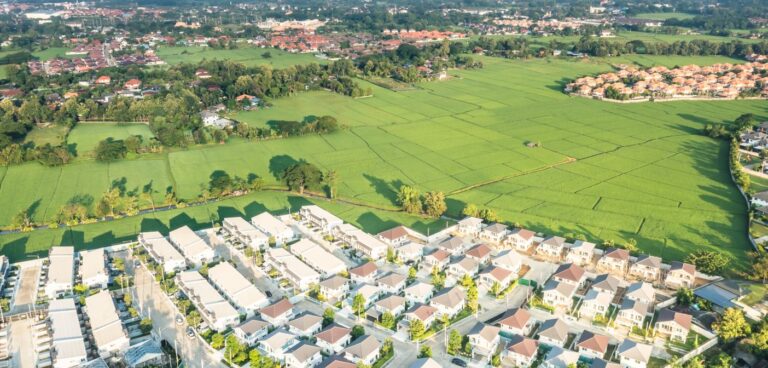New research has found that greenfield housing estates are adding hundreds of thousands of car journeys to UK roads, increasing congestion, carbon emissions and air pollution.
The Building Car Dependency report, released by Transport for New Homes (TfNH), has concluded from field visits to 20 new housing developments across England that a typical greenfield development is designed “in every way” around the car – with as many as two to three car parking spaces per home.
Rather than the walkable, green and sustainable places that both the UK government and developers envisage for future living, the organisation reportedly observed places where residents had to drive for nearly every journey.
Steve Chambers, sustainable transport campaigner at TfNH, said: “We found that new housing estates do not live up to government aspirations of homes built around walking, cycling and public transport.
“With rare exceptions, we discovered that newly built homes are creating thousands of car-dependent households, with poor use of land and tiny gardens to accommodate two or three parking spaces per dwelling.
“Proposals for housing as part of the Levelling Up White Paper will produce more of the same without a dramatic change in approach to planning.
“Housing must be mixed with, or built close to, amenities and jobs to make active travel a reality for short trips, and good quality public transport provided as soon as the first residents move in.”
The research follows TfNH’s 2018 report on visits to housing developments. Returning to those sites three years later, the organisation has claimed that new greenfield housing has become even more car-based than before and that the trend has extended to surrounding areas, with out-of-town retail, leisure, food outlets and employment orientated around new road systems.
In contrast, TfNH found that brownfield developments in cities tended to be less car-based, allowing better access to local amenities by foot, cycle and public transport.





